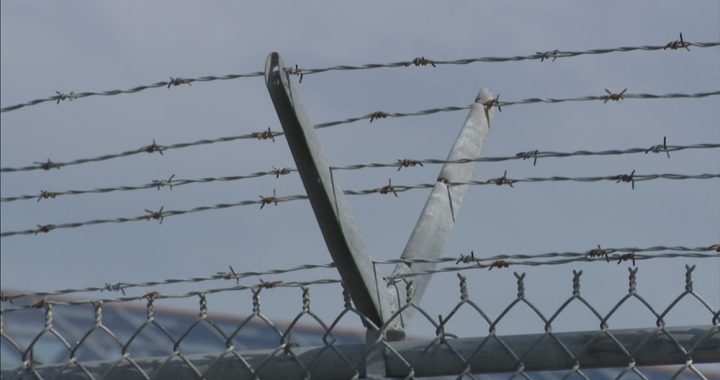
The image shared by the RCMP of the new ribbon skirt.
The Royal Canadian Mounted Police (RCMP) are incorporating ribbon skirts into its uniforms.
The announcement from RCMP Commissioner Mike Duheme on X, formerly Twitter, was made Tuesday.
“Today the RCMP officially announces the addition of the Ribbon Skirt to the RCMP uniform,” said the post on X. “The Ribbon Skirt, along with our Eagle Feather and Métis Sash, demonstrate the RCMP’s values of reconciliation, equity, diversity, and inclusion.”
Today the #RCMP officially announces the addition of the Ribbon Skirt to the RCMP uniform. The Ribbon Skirt, along with our Eagle Feather and Métis Sash, demonstrate the RCMP’s values of reconciliation, equity, diversity, and inclusion. pic.twitter.com/wMONaPxQ2V
— CommrRCMPGRC (@CommrRCMPGRC) May 22, 2024
Social media influencer Kairyn Potts shared his thoughts on the move via TikTok.
“For me, it’s a no,” he said in the video. “Those who are aware of the history of the RCMP may feel the same. The RCMP were created to enforce residential school policies. And remove Indigenous kids from their homes.
“Seeing a big symbol of our culture being worn by an institution that has historically, and continues to cause harm to us feels disrespectful.”
Many of his followers agreed.
Said Symone Peltier: “Hard pass. It’s giving performative.
“We asked for internal investigations of the officers who dealt with all the Indigenous people who were left frozen in the prairies, why no one helped our women at man camps?” she said.
“Flaunting our ribbon skirt is hardly a step towards reconciliation.”
Said another commenter, “This is a reconciliation initiative created by the RCMP Women’s Indigenous Network, only Indigenous RCMP members will wear them.”
Inspired by 11-year-old Isabella Kulak, a Saskatchewan girl who was shamed at her school when she was told her handmade ribbon skirt didn’t count as formal wear, National Ribbon Skirt Day was first celebrated in 2023.
The history of the RCMP
This is not the first attempt by the RCMP to incorporate Indigenous culture into its practices.
In 2017, the Mounties unveiled the Eagle feather Initiative in Nova Scotia. Shortly after, eagle feathers were distributed to all 54 detachments in Nova Scotia. In 2018, the force introduced the Eagle Staff, and in 2021 included orange beadwork to the National Eagle Staff to commemorate the legacy of residential schools.
Historically, the RCMP have had a turbulent relationship with Indigenous peoples.
According to the RCMP’s website, the force was founded in 1873 as the North West Mounted Police. In 1885, its officers hanged Louis Riel for his role in the Red River and Northwest resistance.
To further serve the Crown, in 1904, King Edward VII proclaimed the force the Royal North West Mounted Police (RNWMP), and in 1920 the Government of Canada amalgamated the RNWMP and the Dominion police into what we know today as the RCMP.
In 1933, the Indian Act appointed the RCMP as truant officers to enforce attendance and return Indigenous children to residential schools.
Between 1953 and 1955, the RCMP moved Inuit from Inukjuak in Northern Quebec and Mittimatalik (Pond Inlet) to re-settle two locations in the high Arctic.
Ribbon skirts were among the Indigenous cultural practices banned by the government under the Indian Act in the 1800s.
As previously reported by APTN News, the RCMP were also involved in what is commonly called the 1990 Oka Crisis, when the Sûreté du Québec, a provincial police force, coordinated with the RCMP during a 78-day standoff against the Mohawks of Kanesatake who blocked a road to protect a burial ground from a golf course development.
More recently, the RCMP violently arrested members at the Gidimt’en Checkpoint for the Wet’suwet’en protesting pipelines through their territories.
Catherine Thomas lives in Wet’suwet’en territory, in the middle of the Highway of Tears, and has seen firsthand the damage done to Indigenous peoples by the RCMP.
“Not more than a couple of years ago, RCMP in tactical gear pointed their assault rifles into Indigenous women’s faces to appease industry and dismiss the Delgamuukw/Gisday’wa decision with government-led violence,” she said. “They also stalked Indigenous women involved at 44 km Gidimt’en Checkpoint.
“Part of the meaning of a ribbon skirt is a direct connection to Mother Earth, and RCMP don’t hold that standard as they help industry destroy the land.”
RCMP Women’s Indigenous Network
The initiative for the ribbon skirts came from the RCMP Women’s Indigenous Network, started by Sgt. Kelly Willis.
Willis, who is from Chisasibi, a Cree reserve in northern Quebec, explained her story in an article on the RCMP’s website.
According to the article, Willis is the third generation in her family to attend residential school. Her grandmother was among the first in her community to attend but was expelled for stealing a chocolate bar.
“The truth is that she and the other children were hungry,” said Willis in the post. “My grandmother was doing what she thought was right to try to help them.”

According to the website, Willis started the Women’s Indigenous Network (WIN) to break internal barriers for First Nation, Inuit and Metis RCMP employees related to recruitment, retention and career development.
WIN “provides a natural mentorship aspect which helps in unifying and strengthening both our voice and presence in this organization,” said Willis.
“Indigenous employees, in particular women, are under-represented at higher ranks in the organization,” said Willis in the post.
“I’m hoping that this will change as the Women’s Indigenous Network continues to be consulted as a key internal stakeholder for policy, program, and process changes.”
Adding, “I’m extremely proud of my heritage and the role models in my family,” says Willis. “They have always supported me and they’re proud that I’m an RCMP officer.”
The RCMP’s ribbon skirt uniform post has now gone viral with the comments ranging from disgust to outrage to interested.
Coordinator of Indigenous studies programming at Algonquin College in Ottawa, Marina Westbrook questioned whether it was the right move.
“It’s a tough one,” she said. “I think the intention is good, but after all the harms that the red jackets of the RCMP have done to First Nation, Inuit and Metis, I don’t think the ribbon skirt should be worn together with that jacket.”
The Red Tunic the RCMP wears brings up strong feelings for many Indigenous peoples.
One X user commented, “Imagine, the people who tried to kill you all started wearing your cultural clothing and thought it was enough to make up for the fact that they tried to kill you.”
For another X user the memories are personal.
“My grandpa was forced to walk back home to his Rez 60 kms away from the RCMP detachment by the RCMP in the middle of winter,” she said. “He was found in the spring after he froze to death.”
The Chair and Assistant Professor in the Indigenous Studies, Law, and Social Justice Department, in the Faculty of Liberal Arts at Wilfrid Laurier University., Keri-Lynn Cheechoo, reposted the RCMP’s post on X.
“This image is just missing a wolf who’s holding a dreamcatcher while playing the flute,” she commented.
“In an email to APTN she said, “The ribbon skirt initiative undertaken by the RCMP is a violent and outrageously egregious act of displacement, erasure, and appropriation.”
APTN contacted RCMP headquarters for comment but none was received by the deadline.
Willis reflects on the future, “If we can have our voices heard and if we can have the courage to express ourselves, I think we can play a meaningful role in influencing change, shifting the culture, and supporting the RCMP’s efforts at Indigenous reconciliation.
“Being able to wear cultural items in uniform gives us a sense of pride and also serves as a powerful recruiting tool for Indigenous people who can see themselves represented in the RCMP.”
On the RCMP website Willis said, “I was once asked by an Indigenous protester, ‘How can you be part of this organization?’ I said: ‘What better way to make change happen than to be part of the organization and work for change from within.'”









